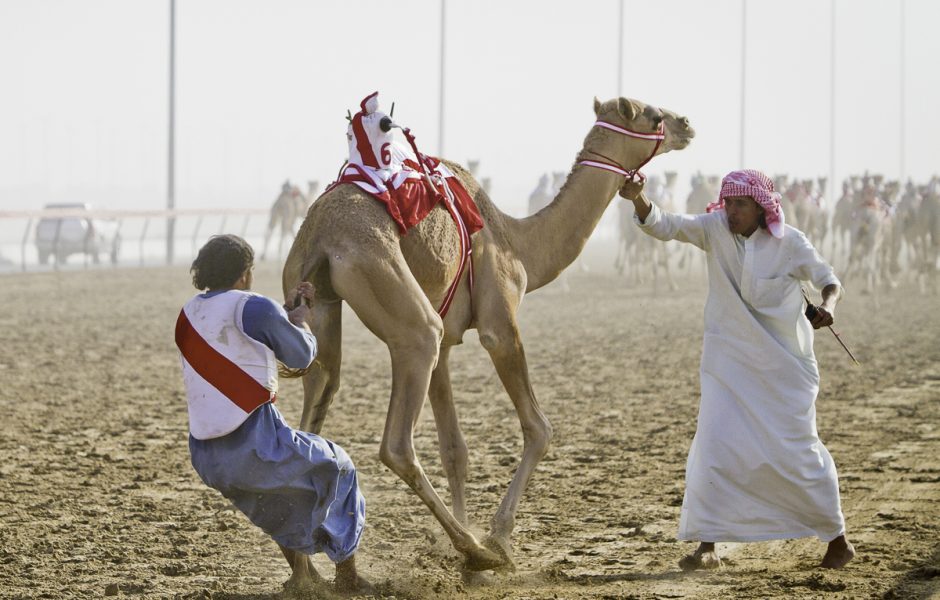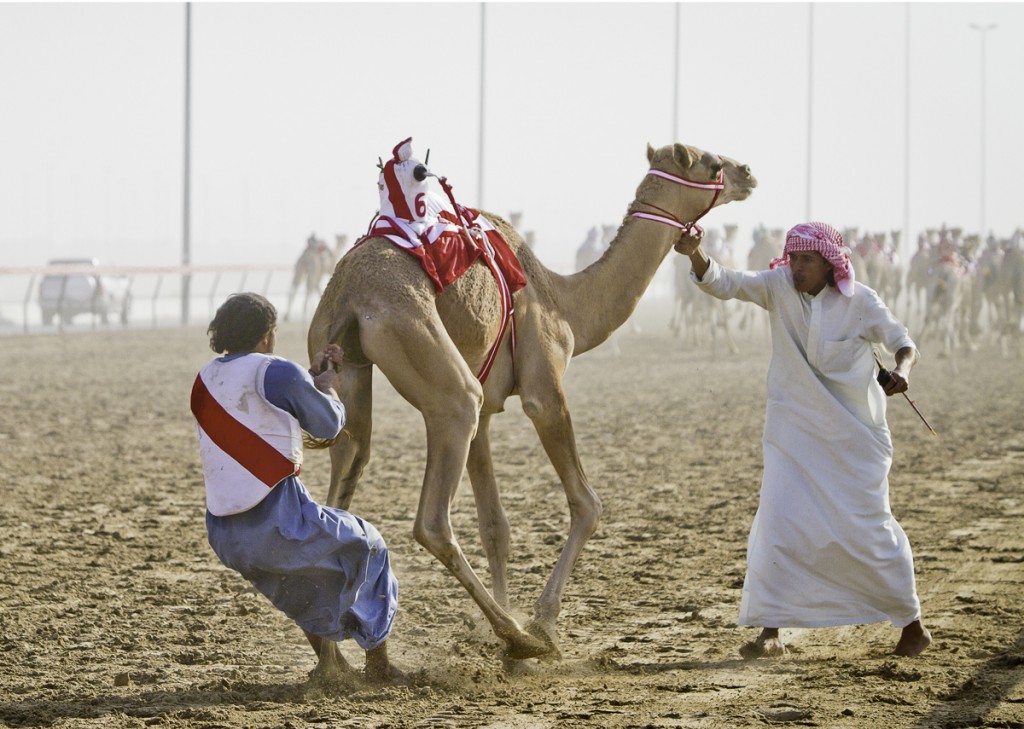Off to the Races: Camel Racing in Dubai

A line of speeding white 4x4s emerges from a thick fog of airborne desert sand, and they are heading directly at us. Munir, my taxi driver, pulls off the pavement just as the herd blazes past at lightning speed — the occupants honking furiously, but not at us. Their attentions are turned toward the adjacent race track with a cluster of galloping camels traveling at speeds up to 40 miles per hour. Meanwhile stick-wielding miniature robot jockeys were perched on their backs, giving the camels a prod.
Yes, you read that right. The unforgettable sight looked something like C3PO riding a Taun Taun in a Star Wars film.

Camel Racing in Dubai / Photo by Laura Watilo Blake
Camel racing season heats up when the temperatures start to cool down in the Arabian desert. Practiced for centuries, the sport is one of the more unique cultural attractions to witness in the United Arab Emirates. In the past, camels were controlled by child jockeys, so the robots are a more recent development. The U.A.E. banned underage labor in 2002 after allegations of human rights abuses in the racing industry. Today, the 4x4s travel alongside the dromedaries and the men inside operate their robots via remote control.
There is surprisingly little published information about race times and venues online, but Dubai Tourism publishes a schedule of sporting events on its website. Armed with only the little information it provided, I jumped in a taxi at 6:30 a.m. to reach the track by 7 a.m. The taxi driver had no idea where to go and the concierge at the hotel mistakenly told him to go to the Meydan Racecourse. He had to stop for directions 5 or 6 times, but we finally reached the Dubai Camel Racing Club, which is visible from the Al-Ain Highway (near exit 37).
There’s no box office, no grandstand, no betting (it’s illegal), no women (except for me) and no English speakers, including the only other tourist (also a photographer). It’s obvious from the camels and 4x4s coming toward us that we entered the track next to the finish line, where a crowd of wranglers, wrapped in headscarves to protect their faces from the blowing sand, are waiting to retrieve their animals following each race.
Munir, who is from Pakistan, had never seen a camel race. He, too, was enthralled. He was able to glean a little information from some of Pakistani wranglers. They recommended heading to the other end of the straight three-kilometer track to watch the races start. But we’d have to brave the oncoming 4×4 traffic. Another race was underway and as the camels cross the finish line, the 4x4s spun around and sped back toward the other end of the track to be ready for the next race. Today, there are 15 consecutive races.
There was a lot more action at the starting gate as the wranglers were preparing the camels for the next heat. Lining up the camels behind the barrier, their wranglers tugged at the ropes from the front of the gate. One camel managed to escape from under the fabric panel meant to hold him back just moments before the race started. When the gate lifted, the wranglers ran in every direction to avoid being trampled by the speeding camels.
Munir and I were directed to an area behind a tall wall, where the handlers were prepping the camels. It was there we met three guys who wanted their picture taken. Naturally, I obliged and then Munir and I took turns taking pictures of each other with them and their prized camels.
We didn’t stay long enough to find out which camel took the prize. And I passed on the opportunity to buy my own robot. To think what I could have done with that.
How to get to the Dubai Camel Racing Club
Al Lusayli, United Arab Emirates
Al-Ain Rd., Exit 37
04 8326526
mail@dcrc.ae
For details and a current race schedule, visit dubitourism.ae (www.dubaitourism.ae/sites/default/files/osic/sports.pdf). There is no public transportation to the track, which is 30 minutes outside of Dubai. A taxi will cost approximately 100 dirham each way, although it’s ideal to have the driver wait. I paid 230 DH for transportation and an hour at the track.

Comments